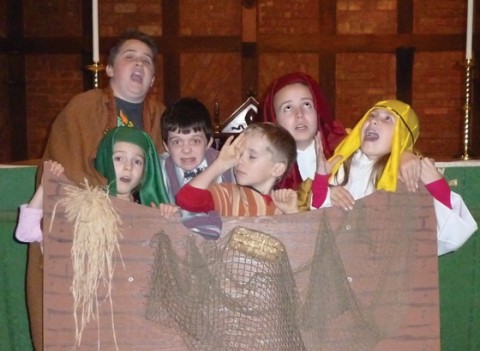Pretending the Bible: A children's ministry of play

Years ago members of our children's church school went to visit the local synagogue. The children walked in quietly and respectfully, but when the rabbi invited them to look at the stone-studded ark containing the Torah scroll, they lost all reserve.
"Look! Aaron's breastplate! Rabbi! Rabbi! Which stone is Zebulun? Which one is Gad? Which one is Issachar?"
My kids knew that Joseph and Levi, although they were sons of Jacob, were not included in the tribes of Israel, but Joseph's sons Ephraim and Manasseh were. The kids weren't showing off. They were genuinely thrilled. The rabbi was astounded at these blue-collar kids from a downtown church in Kingston, New York.




